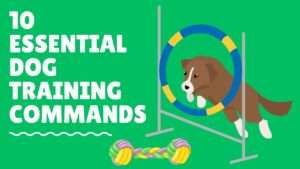Are you a new pet owner, struggling to find the right approach to crate training?
Or perhaps you’ve had some challenges in the past and are seeking a foolproof method for success?
Crate training can be a valuable tool for both puppies and adult dogs, providing them with a safe and comfortable space while aiding in housebreaking and behavior management.
But how do you ensure that crate training is a positive experience for your furry friend?
In this comprehensive guide, we’ll delve into the world of crate training, offering insights, tips, and strategies to help you master this essential skill with ease.
Contents Overview
Understanding Crate Training: What is it and Why is it Important?
Before diving into the nitty-gritty of crate training, let’s take a moment to understand what it entails and why it’s such a valuable tool for dog owners:
- Crate training involves teaching your dog to comfortably spend time in a crate or kennel.
- It provides a secure and den-like environment for your dog, mimicking the natural instincts of wild canines.
- Crate training can aid in housebreaking by teaching your dog to hold their bladder and bowels.
- It helps prevent destructive behaviors by giving your dog a safe space to retreat to when unsupervised.
- When done correctly, crate training can alleviate separation anxiety and promote independence in your dog.
Choosing the Right Crate: Size, Material, and Location
Selecting the appropriate crate is paramount to the success of your training efforts. Here’s what you need to consider:
Size
The crate should be large enough for your dog to stand up, turn around, and lie down comfortably. However, it shouldn’t be too spacious, as dogs are less likely to soil their sleeping area.Material
Crates are typically made of wire, plastic, or fabric. Choose a material that suits your dog’s needs and preferences.Location
Place the crate in a quiet, low-traffic area of your home where your dog can feel safe and secure. Avoid placing it near loud appliances or in direct sunlight.
The Step-by-Step Guide to Crate Training Success
1- Choose the Right Crate
Opt for a crate that is spacious enough for your dog to stand up, turn around, and lie down comfortably. Consider materials like wire, plastic, or collapsible fabric, depending on your dog’s needs and preferences.
2- Introduce the Crate Gradually
Make the crate a positive and inviting space by associating it with pleasant experiences. Place treats, toys, and familiar bedding inside to encourage your dog to explore and enter willingly.
3- Associate the Crate with Positive Experiences
Feed your dog meals near the crate or provide treats and praise for entering voluntarily. Gradually increase the time spent inside the crate with the door open, allowing your dog to acclimate at their own pace.
4- Practice Short Sessions
Start with short periods of crate confinement while you’re home, gradually increasing the duration as your dog becomes more comfortable. Use a command like “crate” or “go to bed” to cue your dog to enter the crate.
5- Avoid Negative Associations
Never use the crate as a form of punishment. The crate should always be a safe and positive space for your dog, associated with relaxation and security.
6- Establish a Routine
Incorporate crate time into your dog’s daily routine, such as during meals, naps, and bedtime. Consistency is key to reinforcing positive crate habits and preventing anxiety or resistance.
7- Use Crate Training for Potty Training
You can use crate training for potty training wisely. Crates can aid in housebreaking by leveraging your dog’s instinct to keep their sleeping area clean. Take your dog outside to eliminate immediately after releasing them from the crate, and praise them for going to the appropriate spot.
8- Avoid Prolonged Confinement
While crates are useful tools, avoid leaving your dog confined for extended periods. Provide ample exercise, mental stimulation, and companionship outside of crate time to prevent boredom and anxiety.
9- Gradually Increase Alone Time
Once your dog is comfortable in the crate, gradually introduce short periods of alone time while you’re away. Start with brief absences and gradually extend the duration as your dog builds confidence and trust.
10- Monitor Your Dog’s Behavior
Pay attention to your dog’s body language and vocalizations during crate training. If they show signs of distress or anxiety, adjust your approach and seek guidance from a professional trainer if needed.
Common Challenges and How to Overcome Them
Despite your best efforts, you may encounter some challenges along the way. Here are a few common issues and strategies for overcoming them:
Whining or Barking
If your dog whines or barks in the crate, avoid giving in to their demands. Instead, wait for a moment of quiet before offering praise or a treat.
Accidents in the Crate
Accidents are bound to happen, especially during the early stages of training. Clean up any messes promptly and avoid scolding your dog, as this can create negative associations.
Resistance to the Crate
If your dog shows resistance to the crate, try making it more inviting with cozy bedding, toys, and treats. You can also try feeding meals near the crate to help create positive associations.
Escaping the Crate
Some dogs may attempt to escape the crate, especially if they feel anxious or confined. Ensure that the crate is securely fastened and consider using a crate cover to create a more den-like environment.
Bottom Line
Crate training can be a valuable tool for dog owners, providing a safe and comfortable space for your furry friend while aiding in housebreaking and behavior management.
By following the steps outlined in this guide and being patient and consistent in your approach, you can set your dog up for crate training success.
Remember to choose the right crate, introduce it gradually, and always make crate time a positive experience for your dog.
With time and dedication, you’ll soon have a well-adjusted and crate-trained canine companion by your side.

Meet Colleen Campbell, the dedicated Owner and Trainer of Positive Interactions Dog Behavior and Training, LLC. With over three decades of experience in research at Dow Chemical, Colleen brings a wealth of knowledge and a scientific approach to her dog training business.




























+ There are no comments
Add yours